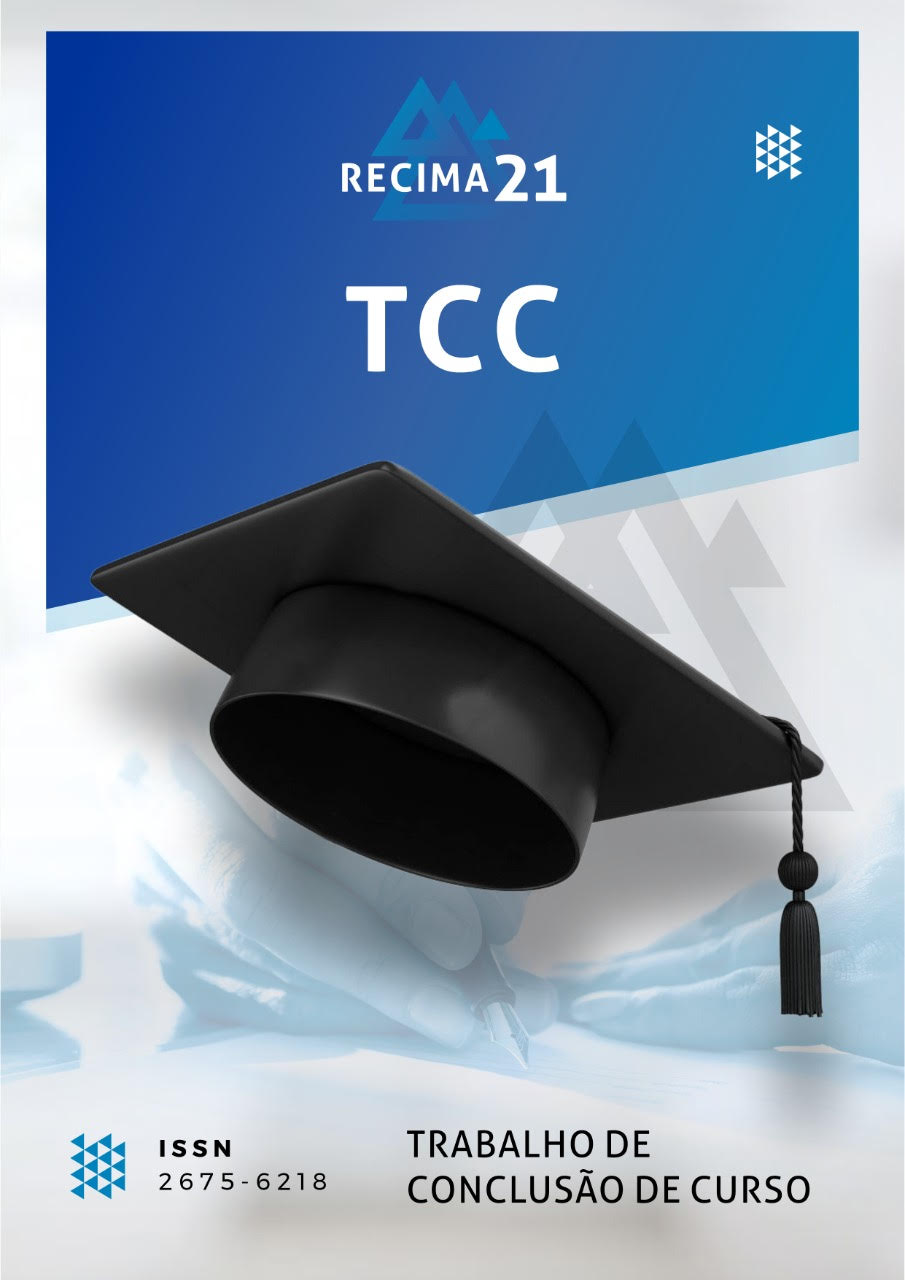THERAPEUTIC AND RESTORATIVE APPROACH IN NON-CARIOUS LESIONS: LITERATURE REVIEW
DOI:
https://doi.org/10.47820/recima21.v4i1.3239Keywords:
etiological agent of the non-carious lesionAbstract
The etiological agent of the non-carious lesion is a compilation of multifactors, and the initial lesion may be caused by erosion, attrition, abrasion, abfraction, or a combination of these causes. However, there is a vast amount of products that can be used in these cases. Therefore, this work made a bibliographic survey about possible approaches for a better clinical care in the treatment of cervical non-carious lesions based on the extensive literature, so that these lesions can be identified early and treated as best as possible.Thepurpose of performing restorative treatment is to establish esthetics, function, and to prevent the progression of the lesion, to reduce dental hypersensitivity and return health and quality of life to the patients. Therefore, the identification and removal of the causative factor before restoring the lesion is essential.
Downloads
References
ADDY, M.; HUNTER, ML. Can tooth brushing damage your health? Effects on oral and dental tissues. Int Dent J. v.53(Suppl 3), p.77-86, 2003
ARENAL, A.A.; MENENDEZ, L.A.; GONZALEZ, I.G.; RIESGO, J.A.A.; VELASCO, A.B.; LANCHARES, H.L. Non-carious cervical lesions and risk factors: A case-control study. Journal of Oral Rehabiltation, [s. l.], 20 set. 2018.
ATTIN, T.; BUCHALLA, W.; TRET, A; HELLWIG, E. Toothbrushing abrasion of polyacid-modified composites in neutral and acidic buffer solutions. J Prosth Dent. v.80, n.2, p.148-50, 1998.
BENTO, A. Como fazer uma revisão da literatura: Considerações teóricas e práticas. Revista JA (Associação Académica da Universidade da Madeira), (2012, Maio). nº 65, ano VII (pp. 42-44). ISSN: 1647-8975
BRAGA, S.R.M.; NETTOI, N.G.; SOLERII, J.M.P; SOBRAL, M.A.P. Degradação dos materiais restauradores utilizados em lesões cervicais não cariosas. RGO. Revista Gaúcha de Odontologia (Online), v. 58, n. 4, p. 431-436, 2010.
BURKE, F.J.T.; WHITEHEAD, S.A.; MCCAUGHEY, A.D. Contemporary concepts in the pathogenesis of the class V noncarious lesion. Dental Update. v.22, n.1, p.28-32, 1995.
DA SILVA COSTA, L.; ALVES, S.S.S; LIMA, D.D.C; DIETRICH, L.; SANTOS-FILHO, P.C.F; MARTINS, V.M. Lesão cervical não cariosa e hipersensibilidade dentinária: relato de caso clínico. Revista Odontológica do Brasil Central, v. 27, n. 83, 2018.
DE OLIVEIRA, A.C.S; DAMASCENA, N.P.; DE SOUZA, C.S. Análise clínica de pacientes portadores de lesões cervicais não cariosas e sua relação com hábitos. RSBO Revista Sul-Brasileira de Odontologia, v. 7, n. 2, p. 182-192, 2010.
FARIA, G.J.M; VILLELA, L.C. Etiologia e tratamento da hipersensibilidade dentinária em dentes com lesões cervicais não cariosas. Revista Biociências, v. 6, n. 1, 2000.
HEYDER, M.; SIGUSCH, B.; HODER-PRZYREMBEL, C.; SCHUETZE, J.; KRANZ, S.; REISE, M. Clinical effects of laser-based cavity preparation on class V resin-composite fillings. PLoS One. v.17, n.6:e0270312, 2022. doi:10.1371/journal.pone.0270312.
HUMEREZ, FILHO H.; LIMA, L.M.; LOPES, M.G.K. Contribuição ao estudo da prevalência, do diagnóstico diferencial e de fatores etiológicos das lesões cervicais não-cariosas. RSBO Revista Sul-Brasileira de Odontologia, v. 2, n. 2, p. 17-21, 2005.
KIMURA, Y.; WIDER-SMITH, P.; YONAGA, K.; MATSUMOTO, K. Treatment of dentine hypersensitivity by lasers: a review. Journal of Clinical Periodontology, v. 27, p. 715–721, 2000
LOPES, A. O. Avaliação clínica de diferentes protocolos no tratamento da hipersensibilidade dentinária cervical. 2012. Dissertação (Mestrado em Dentística) - Faculdade de Odontologia, Universidade de São Paulo, São Paulo, 2012.
LOPEZ, T.C.; DINIZ, I.M.A.; FERREIRA, L.S.; MARCHI, J.; BORGES, R.; DE CARA, S.P.H.M.; D'ALMEIDA-COUTO, R.; MARQUES, M.M. Bioactive glass plus laser phototherapy as promise candidates for dentine hypersensitivity treatment. Journal of Biomedical Materials Research, v. 105, n. 1, p.107–116, 2017
MARSON, F.C. et al. Clinical evaluation of non-carious cervical lesions. Rev Uningá, v. 24, p. 137-156, 2010.
MOREIRA, L.; OLIVEIRA, C.; MARTINS, V.; SANTOS-FILHO, P.; SILVA, C. Lesões cervicais não cariosas: uma abordagem no controle da dor e tratamento. - UPF, Revista Da Faculdade De Odontologia. v.24, n.3, p.375 – 382, 2020.
OLIVEIRA, J.P.S. Os Principais Fatores De Risco Associados A Lesões Cervicais Não Cariosas. 2020. Trabalho Conclusão de curso (Bacharelado em de Odontologia) - Escola Bahiana de Medicina e Saúde Pública, [S. l.], 2020
PINHEIRO, C.F.; MELO, M.P.F.; DA SILVA, R.R.; PEDRON, I.G.; SHITSUKA, C. Lesões não cariosas: revisão de literatura. E-Acadêmica. 2021.
PINHEIRO, J.; DA SILVA, L.A.M.; DA SILVA, G.G.; LEITE, R.B.; GONÇALVES, G.C.; ALMEIDA, D.R.D.M.F. Conceitos sobre o diagnóstico e tratamento das lesões cervicais não cariosas: revisão da literatura. Revista Pró-UniverSUS. v.11, n.1, p.103-108, 2020.
REGIANI, B. C.; ROCHA, H. N.; TOGNETTI, V. M.; ANDRADE, A. P. de. Hipersensibilidade dentinária em lesões cervicais não cariosas: etiologia e tratamento. Archives of health investigation. v.10, n.1, p.42–48, 2020.
REYES, E.; HILDEBOLT, C.; LANGENWALTER, E.; MILE, D. Abfractions and attachment loss in teeth with premature contacts in centric relation: clinical observations. J Periodontol. v.80, n.12, p.1955-62, 2009.
SANDIN, R. Lesões Cervicais Não Cariosas (lcnc): Uma Revisão Bibliográfica. 2013. Trabalho Conclusão de curso (Bacharelado em de Odontologia) - UFSC, [S. l.], 2013.
SANTOS, F.F.C., et al. Avaliação de lesões cervicais não-cariosas em adultos: estudo piloto. Pesquisa Brasileira em Odontopediatria e Clínica Integrada, v. 13, n. 1, p. 31-36, 2013.
SOBRAL, M.A.P.; et al. Influência da dieta líquida ácida no desenvolvimento da erosão dental. Pesquisa Odontológica Brasileira. v. 14, n. 4, p. 406-410, out./ dez. 2000.
Downloads
Published
How to Cite
Issue
Section
Categories
License
Copyright (c) 2023 RECIMA21 - Revista Científica Multidisciplinar - ISSN 2675-6218

This work is licensed under a Creative Commons Attribution 4.0 International License.
Os direitos autorais dos artigos/resenhas/TCCs publicados pertecem à revista RECIMA21, e seguem o padrão Creative Commons (CC BY 4.0), permitindo a cópia ou reprodução, desde que cite a fonte e respeite os direitos dos autores e contenham menção aos mesmos nos créditos. Toda e qualquer obra publicada na revista, seu conteúdo é de responsabilidade dos autores, cabendo a RECIMA21 apenas ser o veículo de divulgação, seguindo os padrões nacionais e internacionais de publicação.













